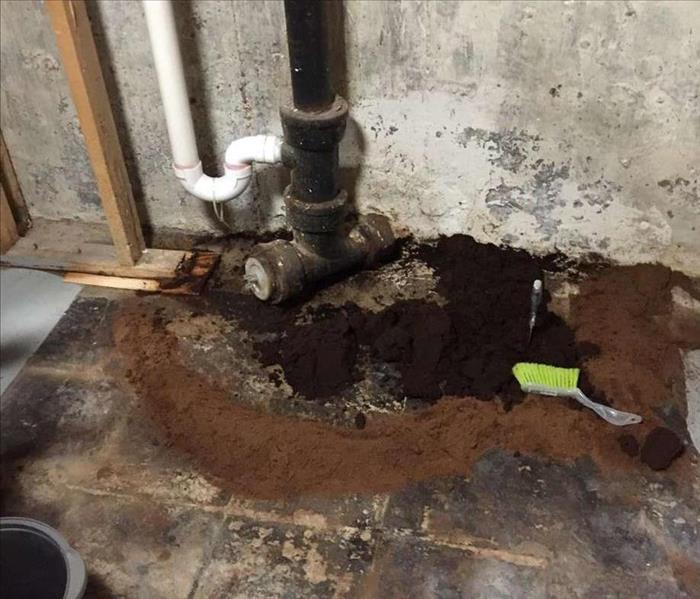Mold Preventing in Basement
6/7/2018 (Permalink)
Control water & moisture
All of the above will be futile if you do not take steps to control excess moisture in your basement and around your home. Mold needs about 70-percent relative humidity to be active and produce spores. Reducing moisture begins with preventing water infiltration. If, for example, puddles form along basement walls after a heavy rain, examine your gutter and downspouts for clogs and disconnects. Install splash blocks and downspout extenders, if necessary. Take a level to concrete walkways that run along the perimeter of your home. If they have settled so that they now slope toward your foundation instead of away from it, call a contractor to make repairs. Slab-jacking companies can use polyurethane-injection methods to lift concrete structures, including patios and pool decks. If your walkways are built with pavers or bricks, regrading and rebuilding the path may be necessary.
Relative humidity (RH) rises above 65 percent in basements during the summer in much of the United States and Canada. If this is your situation, run a dehumidifier and set the relative humidity at 65 percent or less. Choose a model that is adequately sized for your space — small room-size dehumidifiers will not survive in a basement. Ideally your dehumidifier should include a high-performance air filter. Find a way to set up the dehumidifier to drain automatically, so you don’t have to remember to empty the reservoir every day or two. You can accomplish this in several ways.
Contact SERVPRO of Morristown for mold remediation in New Jersey.



 24/7 Emergency Service
24/7 Emergency Service
